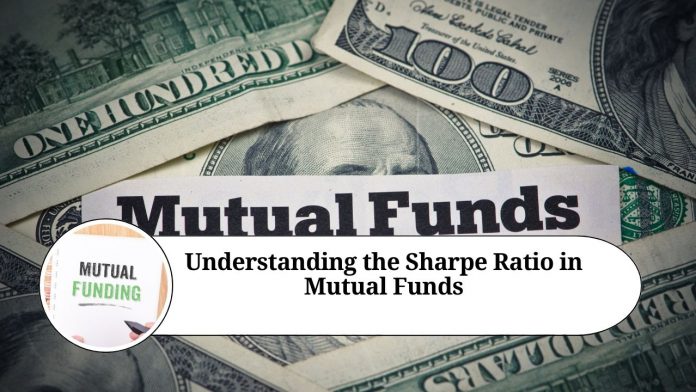Investing in mutual funds can be an excellent way to grow your wealth over time. However, with thousands of funds to choose from, it can be challenging to identify the best mutual funds for your portfolio. One tool that can help you evaluate mutual funds’ performance is the Sharpe ratio. In this blog post, we will explain what the Sharpe ratio is and how you can use it to evaluate mutual funds.
What is the Sharpe Ratio?
The Sharpe ratio is a measure of risk-adjusted performance. It was developed by William Sharpe in 1966 and has since become a widely used metric in the world of finance. The Sharpe ratio measures the excess return (return above the risk-free rate) of an investment relative to its risk. The higher the Sharpe ratio, the better the investment’s risk-adjusted return.
How is the Sharpe Ratio Calculated?
The Sharpe ratio is calculated by subtracting the risk-free rate of return from the investment’s return and dividing the result by the investment’s standard deviation. The formula for the Sharpe ratio is as follows:
Sharpe Ratio = (Investment Return – Risk-Free Rate)/Investment Standard Deviation
The risk-free rate is the return an investor would receive if they invested in a risk-free asset, such as a U.S. Treasury bond. The standard deviation is a measure of the investment’s volatility. A higher standard deviation indicates a higher level of risk.
Why is the Sharpe Ratio Important for Mutual Funds?
When evaluating mutual funds, the Sharpe ratio can be a valuable tool because it allows you to compare the risk-adjusted returns of different funds. A mutual fund with a higher Sharpe ratio has delivered better risk-adjusted returns than a fund with a lower Sharpe ratio, assuming similar levels of risk.
However, it is important to note that the Sharpe ratio is not the only metric you should consider when evaluating mutual funds. It is essential to also evaluate other factors such as fees, investment objectives, and fund management when making investment decisions.
Limitations of the Sharpe Ratio
While the Sharpe ratio is a useful tool, it has its limitations. For example, the Sharpe ratio assumes that the investment returns follow a normal distribution. However, financial markets are often characterized by non-normal distributions and extreme events that can impact returns. Additionally, the Sharpe ratio does not consider the maximum drawdown (the largest percentage drop from a peak to a trough) or the skewness of the returns distribution.
Conclusion
the Sharpe ratio is an important tool for evaluating mutual funds’ risk-adjusted performance. It measures the excess return of an investment relative to its risk and allows you to compare the risk-adjusted returns of different funds. However, it is important to remember that the Sharpe ratio is not the only metric you should consider when evaluating mutual funds. You should also evaluate other factors such as fees, investment objectives, and fund management when making investment decisions.
Read more useful content:
- How to invest in mutual funds
- Best Technology Mutual Funds
- All about mutual funds-types & importance
- The Power of SIP Investment in Mutual Funds
Frequently Asked Questions (FAQs)
Q: What is the Sharpe ratio, and how is it calculated?
A: The Sharpe ratio is a measure of risk-adjusted performance that compares the excess return of an investment relative to its risk. The ratio is calculated by subtracting the risk-free rate of return from the investment’s return and dividing the result by the investment’s standard deviation.
Q: How is the Sharpe ratio useful in evaluating mutual funds?
A: The Sharpe ratio is useful for evaluating mutual funds because it allows you to compare the risk-adjusted returns of different funds. Mutual funds with higher Sharpe ratios have delivered better risk-adjusted returns than those with lower Sharpe ratios, assuming similar levels of risk.
Q: What is the risk-free rate of return, and why is it important in calculating the Sharpe ratio?
A: The risk-free rate of return is the return an investor would receive if they invested in a risk-free asset, such as a U.S. Treasury bond. It is important in calculating the Sharpe ratio because it provides a benchmark for measuring the investment’s excess return above the risk-free rate.
Q: What are the limitations of the Sharpe ratio?
A: The Sharpe ratio has several limitations, including the assumption that investment returns follow a normal distribution, which may not always be the case. Additionally, the ratio does not consider the maximum drawdown or skewness of the returns distribution, which can impact the investment’s risk.
Q: Can the Sharpe ratio be used as the sole metric for evaluating mutual funds?
A: No, the Sharpe ratio should not be used as the sole metric for evaluating mutual funds. Other factors, such as fees, investment objectives, and fund management, should also be considered when making investment decisions.




















